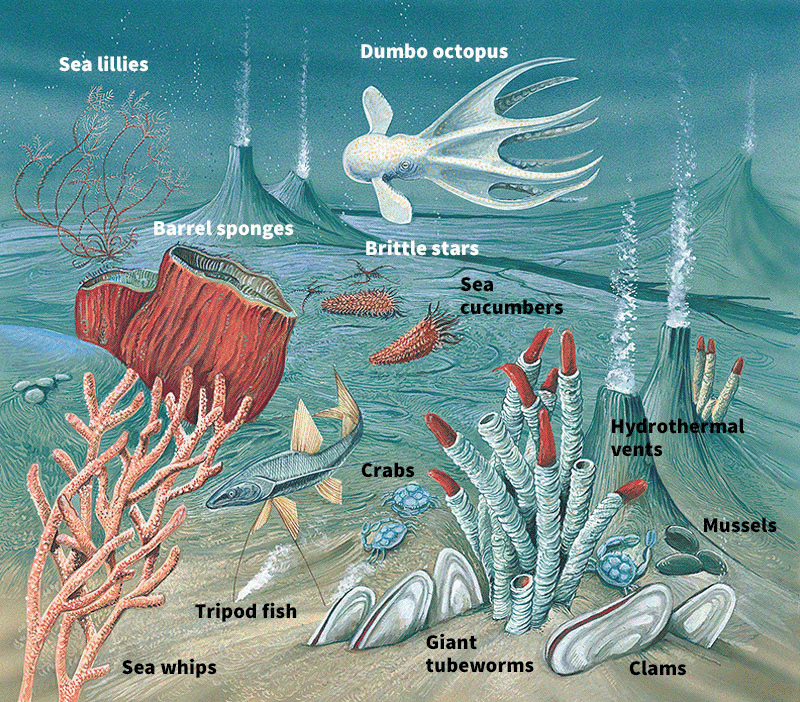Antarctic Vents Hotspot for New Species
Thursday, January 12th, 2012Jan. 12, 2012
At least 23 new animal species have been discovered living around hydrothermal vents in the Southern Ocean, near Antarctica. The species include barnacles, sea anemones, starfish, snails, and yeti crabs. The yeti crabs were by far the most abundant species, with heaps of the white creatures jostling for position in the flow of water from the vents. Scientists surveyed the vents using a robotic vehicle tethered to a research ship on the surface. The vents are about 8,000 feet (2,438 meters) beneath the surface.
Hydrothermal vents are areas where heated water flows from the ocean floor. In the Southern Ocean, water exits the vents at temperatures up to up to 720 °F (383 °C), but it quickly cools as it meets the frigid water of the deep Southern Ocean. As the water cools, it releases chemicals that bacteria can use to make their own food. Animals provide the bacteria with a place to live in exchange for food. For example, the yeti crabs are covered in hairlike filaments that house the bacteria.

The deep sea holds some of the most fascinating creatures on Earth. Deep-sea dwellers include the cirrate octopod (an octopus), the tripod fish, and many animals that resemble corals. Other animals live around hydrothermal vents, including tubeworms and mussels. This illustration shows only a few of the creatures from the deep sea. Many of the animals shown in this illustration come from different parts of the deep sea and would not be found living together. World Book illustration by Tony Gibbons, Bernard Thornton Artists
The newly discovered species are unlike those found around other hydrothermal vents, where giant tubeworms, mussels, and shrimp dominate. The scientists believe that harsh conditions in the Southern Ocean probably prevent these animals from colonizing vents there. The researchers expect to identify other new species as they continue to study samples taken from the area.
Scientists have been fascinated by life around hydrothermal vents since the first vent was discovered in 1977. Organisms that live around hydrothermal vents do not depend on the sun for energy, unlike nearly all other life on Earth. Some scientists believe that life first arose around hydrothermal vents. Scientists also speculate that alien planets with harsh environments may support extraterrestrial life similar to the extremophiles found around hydrothermal vents.
Additional articles in World Book:
- Archaea
- Back in Time (Biology 1977)
- Back in Time (Geology 1977)
- Deep sea
- Exploring the Ocean Abyss (A Special Report)


